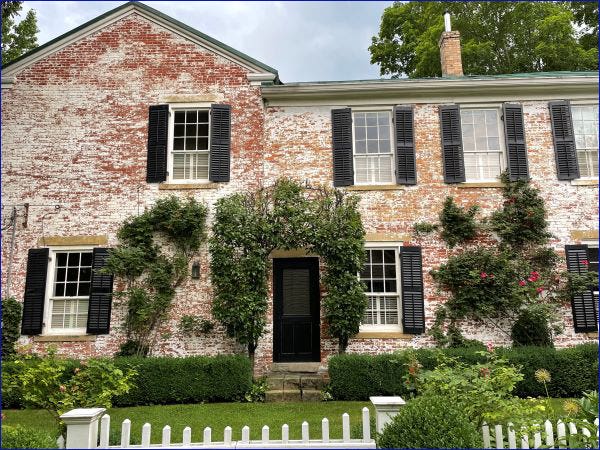
Peter Miller
50 Years of Old House Love
Twenty years ago when I had just inherited the stewardship of OHJ from founder and owners Clem Labine and Patty Poore my Mother celebrated my new role as OHJ's publisher by making me a scrapbook
She titled the scrapbook "Peter Miller's Old House Journal". In it she pasted photographs of all the houses we had lived in. I was well into my adulthood when Mother made it dawn on me how I’d come by my love of old houses. We always lived in an old house often in the historic district.
We moved around a lot growing up so there were 7 old houses in Chicago, Kalamazoo, Cincinnati, New York, Princeton, Annapolis and Granville. The oldest house was an 1830s Federal. The youngest a 1910 Queen Anne. The old house I live in now is a young 1924 Arts and Crafts.
Funny how a Mother can know us better than we know ourselves. I’m feeling particularly nostalgic about OHJ's 50 year history including all that I’ve learned from working together with Patty Poore and reading her stories for forty of those fifty years. At the outset of OHJ's 50th year Patty wrote her editor’s column about what we can learn from old houses:
- Old houses save us from thinking perfection exists. "The house was there before you. Adapt to it!"
- They put us in touch with the seasons. "Close the damper. Change the storm windows. Wear a sweater."
- Old houses teach our children about eccentricity. "The window glass ripples. The woodwork has patina."
- Old houses introduce us to carpentry, roof flashing, paint stripping. "You may not do it all yourself but you’re more aware of how things work than the average American is.”
Patty goes on to write, "what an old house can not do is free us up from time and money". Fifty years of old house owners spending time and money is a good thing for those of us who serve the old house restoration and renovation market!
My anniversary reminiscences have also had me wondering how many old house owners are old? So I dove into some research to learn about old house owner demographics.
I was pleasantly surprised to see that old house inhabitants continue to get younger with the largest cohort between 30 and 50 years old.
Here's to the next generation of old house owners! OHJ looks forward to teaching old house lessons for the next 50 years.
Peter H. Miller, Hon. AIA, is the publisher and President of TRADITIONAL BUILDING, PERIOD HOMES and the Traditional Building Conference Series, and podcast host for Building Tradition, Active Interest Media's business to business media platform. AIM also publishes OLD HOUSE JOURNAL; NEW OLD HOUSE; FINE HOMEBUILDING; ARTS and CRAFTS HOMES; TIMBER HOME LIVING; ARTISAN HOMES; FINE GARDENING and HORTICULTURE. The Home Group integrated media portfolio serves over 50 million architects, builders, craftspeople, interior designers, building owners, homeowners and home buyers.
Pete lives in a classic Sears house, a Craftsman-style Four Square built in 1924, which he has lovingly restored over a period of 30 years. Resting on a bluff near the Potomac River in Washington, D.C., just four miles from the White House, Pete’s home is part of the Palisades neighborhood, which used to be a summer retreat for the District’s over-heated denizens.
Before joining Active Interest Media (AIM), Pete co-founded Restore Media in 2000 which was sold to AIM in 2012. Before this, Pete spent 17 years at trade publishing giant Hanley Wood, where he helped launch the Remodeling Show, the first trade conference and exhibition aimed at the business needs and interests of professional remodeling contractors. He was also publisher of Hanley Wood’s Remodeling, Custom Home, and Kitchen and Bath Showroom magazines and was the creator of Remodeling’s Big 50 Conference (now called the Leadership Conference).
Pete participates actively with the American Institute of Architects’ Historic Resources Committee and also serves as President of the Washington Mid Atlantic Chapter of the Institute of Classical Architecture & Art. He is a long-time member of the National Trust for Historic Preservation and an enthusiastic advocate for urbanism, the revitalization of historic neighborhoods and the benefits of sustainability, including the adaptive reuse of historic buildings.









